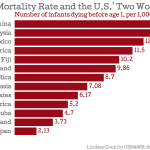Factors that Contribute to Hormonal Imbalances in Men and Women
Not all people are the same, but when it comes to hormonal imbalance and overall endocrine function, there are common problems that may affect any person at any time, at any place, and at any age. This short guide will explain these factors and how they can impact your health and wellbeing.
Aging
The body’s endocrine system is made up of a special group of cells that are responsible for producing hormones—natural substances that influence target cells, tissues, organs, and systems. Hormones affect growth and development, metabolism, digestion, sexual function, mood, cognitive functions, and stress response and many other body functions.
The way these endocrine tissues work begins to change as we age. Hormone production levels may begin to decrease, and the way the target cells respond to the hormones may also weaken. Hormone levels in the blood may begin to fluctuate, and the metabolism or breaking down of the hormones themselves may become affected. All these changes can lead to many symptoms, including menopause in women, andropause in men, and the development of diseases like obesity and type 2 diabetes.
Diseases and Other Medical Conditions
Many types of diseases and medical conditions can affect hormone levels. There are three basic types of endocrine diseases, namely those that cause hormone hyposecretion (insufficient hormone production), those that cause hormone hypersecretion (too much hormone production leading to excess hormone levels), and benign or malignant tumors of the endocrine glands.
Among Americans, the most common type of endocrine disorder is diabetes, an insulin-related condition that results in high blood sugar levels over an extended period of time. There are many other endocrine disorders, including hypothyroidism, hyperthyroidism, Addison’s disease, Cushing’s disease, and prolactinoma.
Other medical conditions, like those that have something to do with a person’s genetic information, can also affect a person’s hormonal balance. For example, Turner’s syndrome, a chromosomal disorder that affects the development of girls, can cause low thyroid hormone and estrogen levels. Low estrogen levels, as you might already know, can cause problems in ovarian function and may also lead to osteoporosis.
Exposure To Stress
Various studies have shown that chronic stress can also cause hormonal imbalance, which can be a precursor to other serious ailments.
When a person encounters a perceived threat, the body responds with a combination of neural and hormonal signals. For instance, the adrenal glands work double-time to produce the hormones adrenaline and cortisol, which are important in the mediating the body’s “fight-or-flight” response. Adrenaline causes increased heart rate and elevated blood pressure, while cortisol increases sugar levels in the body.
After the perceived threat or stressor has gone, adrenaline and cortisol levels usually return to normal, and their effects on the body also go away. However, when stressors are perennially present around the individual, this person is subjected to chronically high levels of these stress-mediating hormones. Over time, this hormonal imbalances can lead to various conditions, including weight gain, depression, anxiety, memory and cognitive problems, sleep disorders, and heart ailments.
Lifestyle Factors
Various lifestyle factors, like eating an unhealthy diet, lack of exercise, and sleep deprivation can also seriously affect a person’s hormonal balance. Eating too much sugar, for instance, can negatively affect a person’s insulin, estrogen, and testosterone levels. Lack of any physical activity, on the other hand, can affect insulin response and the production of testosterone and human growth hormone (HGH). Finally, sleep deprivation can also put a person’s pituitary-dependent hormones off kilter. This is especially true if the individual is constantly awake at night when the body is supposed to be releasing a significant amount of HGH into the bloodstream.
Exposure To Endocrine-Disrupting Chemicals
A lot of people are also exposed to different types of industrial and household chemicals that could have endocrine-disrupting effects. These chemicals mimic the effect of natural hormones in the body.
The abnormal stimulation of targeted cells in the body can result not only in hormonal imbalances, but also in various conditions that can seriously affect the health and quality of life of affected individuals. These problems include birth defects, abnormal sexual development, infertility, and a number of neurological and behavioral disorders.
Poverty
An interesting study by the University College London (published in the journal Social Science & Medicine) revealed that more low-income people have hormonal imbalance problems compared to their more affluent counterparts. For instance, of the more than 1,800 individuals studied, it was revealed that low-income men tended to have lower testosterone levels. This condition is associated with increased body fat, loss of muscle mass, and osteoporosis. Low-income women, on the other hand, had higher testosterone levels. In females, this is associated with conditions like infertility and polycystic ovary syndrome (PCOS).
The researchers concluded that societal and economic factors can negatively affect people’s hormone levels. Low-income people, in particular, are exposed to greater amounts of stress and are prone to living unhealthy lifestyles.
Conclusion
To summarize, many factors can affect a person’s hormonal balance and endocrine function. It is very important to determine which of these are affecting a patient if hormonal or endocrine-related problems are identified. Only then can a medical professional recommend a proper treatment plan, whether it is medical intervention to fight a certain disease, biodidentical hormone replacement therapy to bring the patient’s hormone levels back into equilibrium, or just simple lifestyle changes to effect positive change in the patient’s endocrine function.
Recommended Reading:
- Holistic Guide to Healing the Endocrine System and Balancing Our Hormones
- Gluten, Candida, Leaky Gut Syndrome, and Autoimmune Diseases
- Hypothyroidism – Natural Remedies, Causes, and How To Heal the Thyroid
- How to Cure Lyme Disease, and Virtually Any Other Bacterial Infection, Naturally
- How to Detoxify From Chemotherapy and Repair the Body
- How To Detoxify and Heal From Vaccinations – For Adults and Children
- The Power of Our Hormones and How To Balance Them


